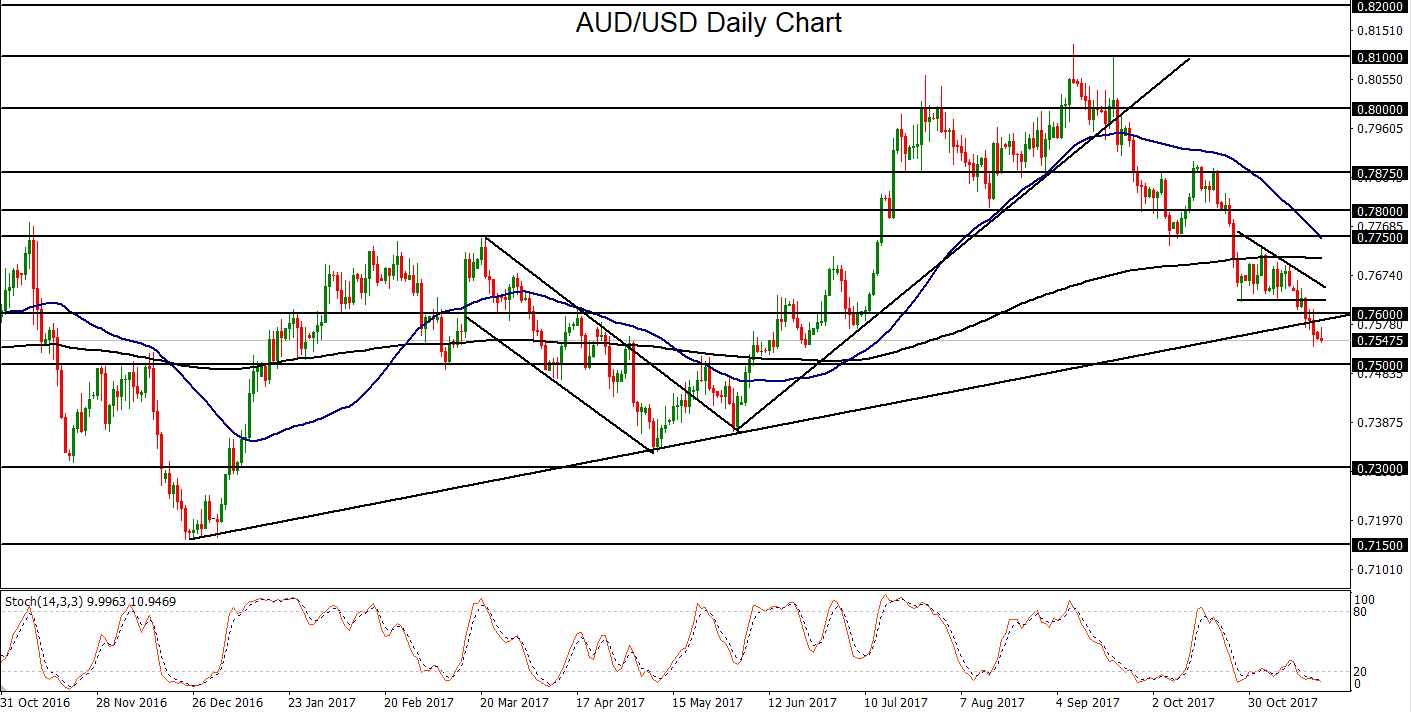This week features the release of policy meeting minutes from three major central banks, which will include both the Reserve Bank of Australia and the US Federal Reserve. The RBA minutes from its meeting two weeks ago will be released on Tuesday in Sydney. The Fed’s minutes from its November 1st FOMC meeting and statement will be released a day later, on Wednesday of this week.
The past two-and-a-half months have seen the Australian dollar weaken considerably against the US dollar. Contributing to the Australian dollar’s weakness has been a generally dovish Reserve Bank of Australia – which kept interest rates unchanged two weeks ago – as well as relatively soft economic data emerging from Australia of late. The RBA has recently continued to harbor concerns over weak inflation, low wage growth, and the relative strength of the Australian dollar, which have combined to preclude the central bank from raising the cash rate from its current record low of 1.50%.
Also contributing to the fall of AUD/USD in the past few months has been a generally-rising US dollar that has been supported, in part, by anticipation of higher interest rates from the Fed as well as fiscal policy reforms from the US government. As for Fed expectations, markets have continued to see more than a 90% likelihood that the Fed will raise rates in December, which has been the case for many weeks now. From a fiscal policy perspective, both the US House of Representatives and Senate have already unveiled their own tax reform plans, and the key question now is whether a definitive tax policy can be approved by the end of the year. Recent uncertainties regarding such tax policy have weighed on both the dollar and, to a lesser extent, US stocks in the past couple of weeks.
From a technical perspective, in the run-up to the RBA and FOMC minutes releases, AUD/USD has already broken down decisively below several key support factors, including a bearish inverted pennant pattern, 0.7600-area support, and a major uptrend support line extending back to the 0.7150-area lows of last December. The breakdown below the long-term trend line is of the most technical significance. If the slide is sustained through this week’s central bank releases and the vagaries of passing US tax reform policy, the next immediate downside target on further AUD/USD weakness is around the critical 0.7500 support area. On any extended break below 0.7500, the next major downside target resides around key 0.7300 support.





